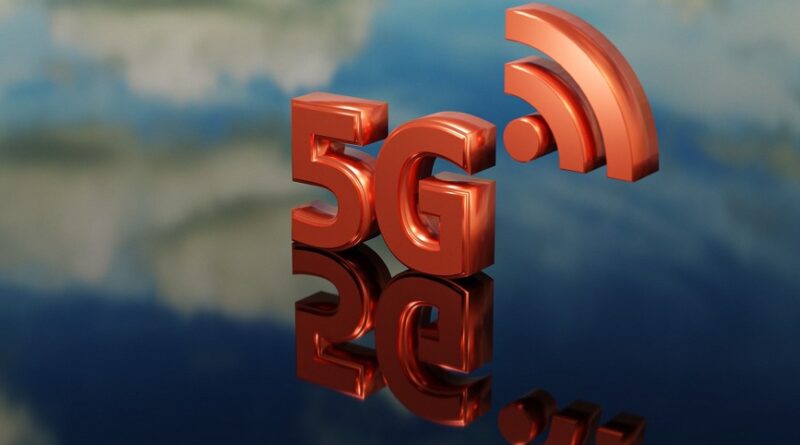5G TECHNOLOGY: WHAT IS IT AND HOW DOES IT WORK?
5G is indeed the 5th generation of mobile network systems, succeeding previous generations such as 2G, 3G, and 4G. 5G networks are expected to provide much faster connection speeds than previous networks. Being more dependable, with shorter response times and greater capacity.
What exactly is 5G?
5G is the fifth generation (the “G” stands for generation) of wireless technology.
The first generation of mobile technology, 1G, was primarily concerned with voice—the ability to use a phone while driving or away from home. A short-messaging layer was introduced by 2G. The core network speeds required to launch the first smartphones were provided by 3G. And 4G LTE, with its high data transfer rates, provided us with access to mobile video with low buffering and gave rise to many of the connected devices and location services on which we rely and enjoy today.
Verizon 5G Ultra Wideband provides speeds up to ten times faster than average Verizon 4G LTE speeds, opening up a whole new world of game-changing possibilities.
How Does 5G Technology Work?
Wireless communications systems transmit data over radio frequencies (also known as spectrum).
5G works in the same way as 4G, but on higher, less crowded radio frequencies. This allows it to transport more data at a much faster rate. These higher frequency bands are referred to as ‘millimeter waves’ (mmwaves). They were previously unlicensed, but regulators have opened them up for licence. They had largely gone unnoticed by the general public because of the inaccessibility and high cost of the necessary equipment.
Whereas increased bands are faster at transmitting data, there may be issues when sending over long distances. They are easily obstructed by physical objects such as trees and buildings. To overcome this challenge, 5G will use several input and output antennae to enhance signal and capacity all across wireless network.
The technology will also employ smaller transmitters. Rather than using single stand-alone masts, they are mounted on buildings and street furniture. According to current estimates, 5G will be capable of supporting up to 1,000 more devices per metre than 4G.
How fast is 5G?
5G download speeds can now reach 1,000 megabits per second (Mbps) or even 2.1 Gbps. To illustrate, a subscriber may start a YouTube video in 1080p quality on a 5G device without it buffering. Try to download an app which can currently take several minutes, can now be completed in a matter of seconds. Wirelessly streaming 4K video becomes much more feasible.
Low band can remain locked at 5G over longer distances, and while the overall speed of low-band 5G may be slower than mmWave, it should still be faster than a good 4G connection. Low-band 5G download speeds could range from 30 to 250 Mbps. Low-band 5G is more likely to be available in rural areas. Midband 5G download speeds could reach 100 to 900 Mbps, and it will most likely be used in major metropolitan areas.
What are the benefits of 5G?
While the drawbacks of 5G are obvious when considering how quickly mmWave can be stopped, or less obvious when considering radio frequency (RF) visibility limits, 5G still has numerous worthwhile advantages, including the following:
use of higher frequencies; high bandwidth; enhanced mobile broadband; a lower latency of 5 ms; higher data rates, which will enable new technology options over 5G networks, such as 4K streaming or near-real-time streaming of virtual reality (VR); and the possibility of a 5G mobile network comprised of low-band, midband, and mmWave frequencies.
Who Is the Creator of the Fifth Generation Network?
South Korea was the first country to adopt on a large scale, in April 2019, with 224 operators in 88 countries around the world investing in the technology.
Except for one carrier in South Korea, all 5G carriers used Samsung, Ericsson, and Nokia base stations and equipment. Samsung was the largest of these suppliers, having shipped 53,000 base stations out of a total of 86,000 installed in the country at the time.
Currently, nine companies sell 5G radio hardware and systems to carriers. Altiostar, Cisco Systems, Datang Telecom, Ericsson, Huawei, Nokia, Qualcomm, Samsung, and ZTE are among them.
When will 5G go live?
The first 5G buildouts are being driven primarily by wireless network operators in four countries: the United States, Japan, South Korea, and China. According to Technology Business Research (TBR) Inc., network operators will invest billions of dollars on 5G capital costs through 2030, though it is unclear how 5G services will generate a return on investment. Going to evolve use cases and business strategies that take full advantage of 5G’s perks can address operators’ revenue worries.
All at the same, standardisations are developing universal 5G device standards. The 3rd Gen Partnership Project (3GPP) accepted 5G New Radio (NR) standards in December 2017 and is expected to finish the 5G mobile core required standard for 5G cellular services.
According to TBR projections, 5G use cases will emerge between 2020 and 2025, with 5G wireless equipment standards nearly finished and the first 5G-compliant mobile phones and affiliated wireless devices available commercially in 2019. By 2030, 5G services will be commonplace, with capabilities ranging from VR content delivery to autonomous vehicle route planning enabled by real-time communications (RTC).
In the United States, some networks are already being developed in select cities. Verizon currently offers mmWave 5G in a few cities, including Atlanta, Boise, Idaho, Boston, Chicago, Dallas, Detroit, Houston, New York, Providence, R.I., and Washington, D.C. Verizon will add more cities to its 5G network over time, including San Diego and Kansas City, Mo. T-5G Mobile’s network comprises areas in Atlanta, Cleveland, Dallas, Las Vegas, Los Angeles, and New York.
How Faster Is 5G Than 4G and 3G?
If 5G achieves the anticipated data rates of 10 Gps, it will be 100 times quicker than standard 4G. In addition, it will be 30 times better than advanced 4G norms like LTE-A. Despite more conservative projections, it will easily outperform both 3G and 4G.
3G has an average download speed of 8Mbps and a highest download speed of 384Kbps, while 4G has an average download speed of 32.5MBps and a maximum download speed of 100Mbps. The average download speed for 4G+ is 42Mbps, with a maximum data speeds of 300Mbps. In comparison, 5G has a theoretical maximum download speed of 1-10Gbps and an average loading times of 130-240Mbps.
5G use cases
5G use cases can range from business and enterprise to more casual consumer use. Here are some examples of how 5G can be used:
streaming high-quality video; communication between many devices in an internet of things (IoT) environment; more accurate location tracking; fixed wireless services; low-latency communication; and improved real-time analytics.
5G offers network management features, such as network slicing, which allows network carriers to create several virtual networks within a single specific 5G network, in addition to improvements in speed, capacity, and latency. This capability will allow wireless connectivity to support specific uses or business cases, and it could be sold as a service. A self-driving car, for example, may require a network slice with incredibly fast, low-latency connections in order for the vehicle to navigate in real time. A home appliance, on the other hand, could be connected via a lower-power, slower connection if high performance is not required. Secure, data-only connections could be used by IoT.
When can we expect 5G networks to be operational?
The first 5G launches will rely on the existing 4G LTE infrastructure. The rollouts are expected to begin in the busiest areas first.
In the United Kingdom, for example, 5G will be available in 26 cities between 2019 and the end of 2020. The cities of London, Birmingham, Manchester, Edinburgh, Cardiff, and Belfast will be among the first to prepare for this new technology.
What Impact Will 5G Have on Future Technology?
The first and most obvious benefit is that it is quicker and more dependable than 4G or 3G. While this tends to mean that you will be able to download a video in seconds on your 5g home broadband or stream a 4K film without buffering, it also means that virtual and augmented reality applications will improve. Because of 5G’s high capacity and short latency, advanced production process will be able to be managed remotely rather than locally via mobile devices and headsets.
This increased capacity will enable the growth of Internet of Things devices, with goods such as refrigerators, lights, cars, and even advertising hoardings being able to connect and communicate with one another. While Internet of Things devices are already popular, 5G will improve speed and capacity, allowing almost every device to become connected and’smart.’
While these advancements are all advancements on existing technologies, they should also enable the creation of entirely new markets, such as autonomous vehicles. Because of the lower latency provided by 5G, these vehicles will be able to connect to each other and the Internet without lag.
5G will not only benefit autonomous vehicles; doctors will be able to control medical robots from anywhere in the world, allowing them to perform procedures remotely.
As previously stated, a successful trial of an excavator controlled across continents has already occurred, but 5G appears set to transform the world of industry by allowing real-time monitoring and control of robots, drones, and entire factories.




